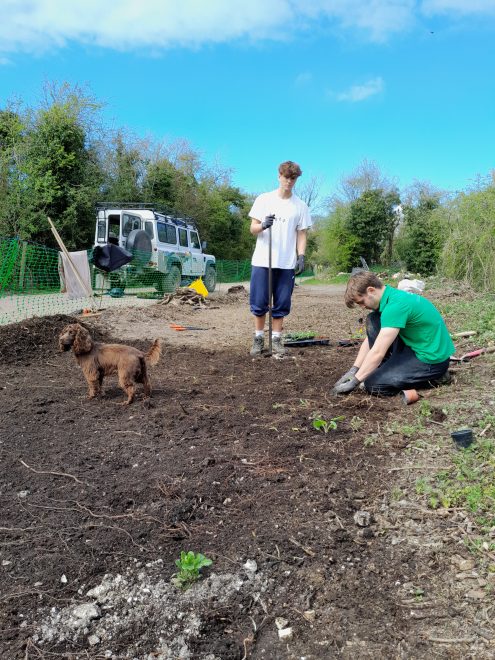My experience with South Downs National Park rangers…and what I’ve learnt
April 26, 2022
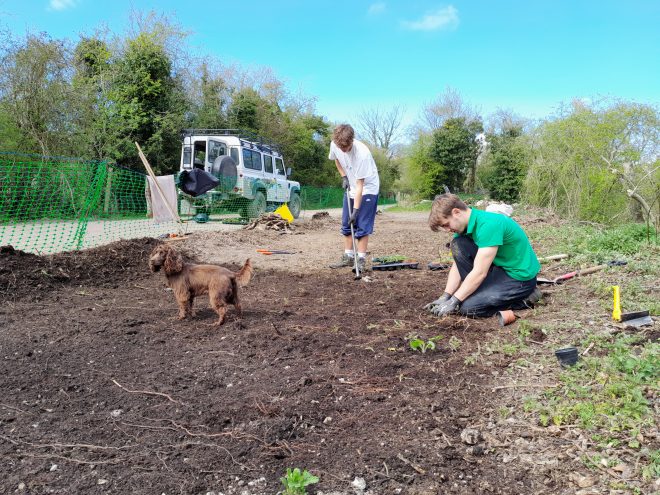
Sam Patterson, 17, spent some time on work experience with South Downs National Park Rangers and writes about his experience here.
My experience
I’ve always enjoyed being outdoors and in nature. Consequently, getting the opportunity to work with the National Park rangers for two days in the open air was an exciting and enriching experience.
We started off on Tuesday by clearing out dogwood, an invasive species, from a nutrient-rich chalk grassland site.
The problem with nutrient-rich soil is that it gives no opportunity for competition amongst different species as one dominant species, for example dogwood, takes over, flourishing in the presence of nutrients. In order to promote biodiversity, this invasive species had to be cleared out and then removed, lowering the nutrients in the ground, resulting in a more diverse portfolio of species being able to grow, such as wildflowers.
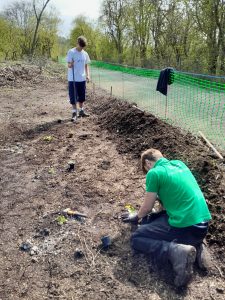 It was a physically enduring task, however it was very enjoyable and pleasant to be working outdoors in the sunshine.
It was a physically enduring task, however it was very enjoyable and pleasant to be working outdoors in the sunshine.
On Wednesday morning we finished off the rest of a fence, which a previous group of volunteers had started. By using locally sourced coppice timber, we weaved a fence along the side of a path going down a hill which overlooks the Salterns Way.
After a series of heavy Ash Dieback removal, the previously secluded footpath became open, exposing a steep drop off on the side of the pathway. Consequently, a fence had to be constructed to prevent things falling, and to preserve the concealed atmosphere.
After lunch we visited a site along the Salterns Way where the Ash Dieback that had been cut down had been previously kept. All that remained was a desolate patch of dirt, sticks and woodchips where the cut down Ash Dieback had been stored.
In order to maintain the beauty along the Salterns Way we had to improve the appearance of this section. We did this by raking away the sticks and wood chips, revealing the more arable chalky mud. This gave us a more fertile patch of land on which we scattered seeds and planted plug plants, such as cowslip and violets.
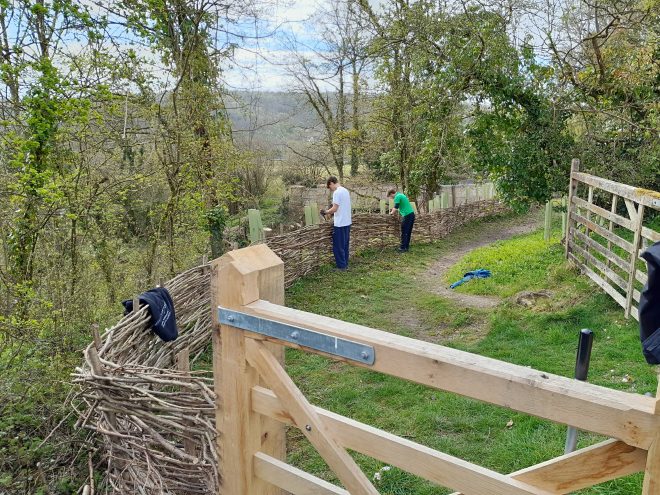
What I learnt
Throughout my experience with the National Park rangers across two days, I have learnt a lot about the Park, how it functions and got a taste of what the job of a ranger entails.
A large proportion of work goes into practical conservation: taking care of the landscape and promoting biodiversity in areas across the park, by regularly doing work on sections with volunteers. I learnt about the importance of maintaining biodiversity and how they go about doing it.
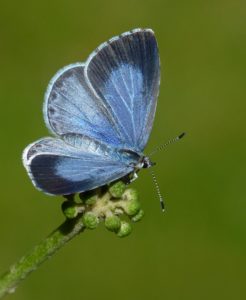 What I learnt was that for biodiversity to occur, there has to be a certain level of competition amongst species. In order to achieve this competition there has to be a lack of nutrients in the soil for the species to compete over. So, counterintuitively, in order to increase biodiversity, the level of nutrients in the soil has to be low, which I found fascinating.
What I learnt was that for biodiversity to occur, there has to be a certain level of competition amongst species. In order to achieve this competition there has to be a lack of nutrients in the soil for the species to compete over. So, counterintuitively, in order to increase biodiversity, the level of nutrients in the soil has to be low, which I found fascinating.
Rangers also have to respond to enquiries from the public about areas in the park. For example, we visited a footpath after a member of the public informed us it was overgrown and difficult to navigate. After having a brief walk along it we decided it was necessary for a future volunteer group to trim it back and help preserve the footpath.
I also learnt that it’s important to educate and inform the public on work which is being done. For example, while we were clearing out the dogwood on Tuesday, we made an effort to educate members of the public, who were walking by, about how it is necessary to remove this invasive species then dispose of it so it doesn’t mulch back into the ground adding an excess of nutrients resulting in low biodiversity.
Naturally, I learnt a lot about wildlife and different types of species, as I was outside for all of the two days, with rangers who were experts on plant life. I learnt how to identify different types of flowers and different types of trees and their leaves, which I found captivating.
It was a very interesting and entertaining few days for me, and I thoroughly enjoyed the opportunity to get an insight and gain a deeper understanding into what goes on in the National Park.
